Darkness, Light and Legacy

Written by Serdar Ferit
Filmmaker, digital experience designer, and teacher who has won numerous awards and worked in over 20 countries on film, new media and education projects. Co-CEO of Lyfta.
Legacy
I founded Lyfta with my amazing wife, Paulina, 7 years ago, and since then we have built the most phenomenal team. Our journey started in 2004, with a story that inspired us, and over the years it has developed into our life’s work. Like many of the people we work with in education, we want our legacy to be one of big, positive and lasting change.
For those who don’t know, Lyfta is a learning space for children where they can access powerful, real-life stories through short documentary films and explorable immersive environments. We learn through stories and Lyfta is designed to teach children about the incredible and varied web of people and communities across the globe.
Legacy is something I have been thinking about a lot lately. Just as I thought Lyfta was finally finding its feet, with a complete team and a sense of a gear change on the horizon – a less intense one for me, I hoped! – I found out that I have colorectal cancer. This was in early October. The doctors initially said it was at an early stage and a slow grower, but after a couple of biopsies and numerous scans, in mid November, I found out that it has spread to my liver; stage 4. A bit of a curveball at 42.
The most difficult thing I have done in my life is telling our 8 year old son that I have cancer. Not being able to reassure him, with authenticity, that everything will be OK, triggered a cocktail of emotions I’ve not experienced before, and wouldn’t wish on anyone.
I’m not telling you this so you can feel sorry for me. I’m determined to beat this thing. I know that the key to this will be my frame of mind. I am a relentlessly positive person, but the last few months have been challenging in that regard.
Darkness and Light
I know I’m not the only one who has had a difficult period. Most of us have had a very challenging last few years. As a leader, part of my duty is to see the light, and to guide my team towards it. Over the last couple of years, light has not always been in abundance. At times, for many of us, things have been rather gloomy. But I think we all know that there is always light, no matter how dark it seems. This is something I’ve had to remind myself recently. And look for.
I am constantly nourished through the meetings I have with other people and the authentic human stories that we have curated and collected on Lyfta over the years. Stories move me. They have been invaluable in giving me different perspectives, in helping me see outside of my own world. Hearing about other people – what they achieve, who they love, the hardships they face and overcome – these stories sustain and change us.
Grown ups need stories too: a series of events to spread hope and inspiration. The amazing poet and storyteller Ben Okri said, ‘Stories can conquer fear and make the heart bigger.’ I think we need this at the moment – I certainly do. In an effort to inject some light and positivity into my life, and the lives of others, over the next year, I will be hosting a series of short online events where I will share short and powerful documentary stories that personify hope and resilience.
These online sessions will be for anyone who needs a lift or a bit of inspiration. A space where you will be able to put your worries to one side and be taken on a short journey. We will immerse ourselves into real human stories of resilience and hope, followed by a reflection exercise which will give you a space to express your thoughts if you wish to.
The Format
The sessions will be an hour long and there will be six over the coming year. We will explore two very different stories in each session, followed by a short reflection exercise, and, over the series, we will travel to at least 10 different countries. The stories are incredible and I am honoured and excited to share them with a wider audience.
There will be an opportunity to donate too, which will go towards subsidising Lyfta for all schools and provide a bursary fund for schools in financial difficulty, or with pupils in need or crisis.
Lighting the Way: Please Join Me
If you are interested in joining me for this journey, for one, some or all of the sessions, please register on the Eventbrite link. You could also get tickets for loved ones, colleagues, or even a whole team! The strength of the sessions will be the stories that we see and hear on screen, but it will be your stories too, and how we find and weave meaning in our lives – it will be that which will make these gatherings so powerful.
I look forward to meeting you around the virtual fireside, and finding the light to inspire us through 2023. I hope you can join me.
Belonging on Purpose
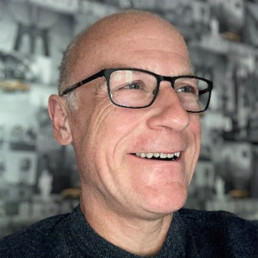
Written by Andrew Morrish
Andrew is a former headteacher and founder trust CEO. He has also been an NLE, inspector, LA adviser, chair of governors, and trustee, so he has seen it from all angles. Andrew is now Director of Makana Leadership Ltd, a consultancy he founded in 2020, and author of The Art of Standing Out (John Catt). Andrew also co-founded Headrest during the pandemic, a free wellbeing support service for headteachers.
One of the greatest challenges during my two decades as a headteacher was trying to build a culture of belonging.
For many schools, this becomes the holy grail. It’s easy to understand why. Research tells us that if staff feel isolated and vulnerable at work – that they feel as if they don’t belong – they are more likely to lack engagement, motivation, and commitment. As a result, productivity declines, and we see this often in the lowest performing schools. On the flip side, where there is a strong culture of relational trust for example, the likelihood of this impacting positively on student outcomes is significantly higher.
Leading change must always lead to impact (in this case a culture of belonging). Just because you think you are going about your business of leading, it doesn’t necessarily mean you are changing anything. Leadership without impact is not leadership at all. It’s just you being busy.
So in order for change to lead to meaningful impact, it needs to be done on purpose. It also needs to be done from purpose. The two are very different. Let’s see how.
When we lead from purpose, we do so authentically from a position of strength. The main source of that strength comes from within; our core values and beliefs – the stuff that drives and motivates us. These are the things that we choose to do, not because we have to, but because we want to. These beliefs also determine whether staff are more likely to feel as if they identify with you and the team, department, phase (or school even) that you lead.
In order to lead successfully you need to know that everything starts and ends with you. Who you are, what you believe in, and why you do the things you do. This is at the heart of what it means to lead from purpose.
When we lead on purpose, we do so deliberately, with accuracy, and care. We’ll take both of these in turn in a moment. First though, we need to appreciate that leadership – authentic and purposeful leadership in particular – is too important to lead to chance. It doesn’t just happen. We need to plan for it and to think deeply about when, where, and how it happens.
It’s a bit like going shopping. You have to know what it is you need to buy (make a list), and then when you’ve bought it you then need to know how best to combine them in order to turn the items into something meaningful (i.e. meals). This is the whole point of doing the weekly shop – to keep yourself and others sufficiently nourished. Leading is no different.
The process of shopping (as with leading) is merely a means to an end. It needs to lead to something. And if we just left it to chance, who knows what we’ll up with. We most likely won’t starve, but it will hardly be enriching and enticing.
When planning to lead well, leaders need to take care when thinking about their actions and behaviours. Careful leaders are ethical leaders, and – as would be expected – care passionately about the things they believe in. More importantly, they care passionately about the beliefs of others in a diverse workplace.
If we do this all of the time, consistently, constantly, and convincingly (my three habits of authentic leaders) chances are these behaviours will become normalised. They become habits. Habits help us ensure that we do things automatically and precisely. They are done right each time, without thinking, such as driving to work, talking to a parent, or giving feedback to a pupil.
Precision is essential but only if it’s accurate, for it is this that ensures we are being precise about the right things. It’s accuracy over precision every time.
You can be as precise as you want about sticking meticulously to the speed limit or the ingredients in your recipe. But if you are heading in the wrong direction, or adding salt instead of sugar, then you won’t achieve much.
Accurate leaders do the right things on purpose, and from purpose.
Authentic leaders are accurate leaders because it is done with care. They know that people rarely succeed unless there is purpose behind their actions. It is this sense of purpose – and associated success – that is the bedrock to belonging.
Success is the residue of belonging. It’s what’s left behind long after everyone has gone home. It sticks and lingers and is what makes people keep coming back for more. Success is permanent.
And by success, I don’t mean Ofsted banners outside the school gates, or fancy logos on headed paper. I mean a true sense of deep accomplishment and belonging where self meets the world, the interface of which we call the workplace.
It is of course the place where young people to go to learn, but it’s also the place where we, as adults work. It’s where we spend most of our waking moments, so it makes sense to at least feel as if we belong there.
As poet and philosopher David Whyte says (quoting Blake’s words), “To have a firm persuasion in our work – to feel that what we do is right for ourselves and good for the world at the exact same time – is one of the great triumphs of human existence.”
It is also one of the greatest challenges of school leadership. Known strategies such as allyship, empowerment and mentorship all make for great starts. In my new book, The Authentic Leader, I tell the inspiring true story of Dikgang Moseneke, a man who knew all about the value of these. But as Dikgang reminds us, unless all of these things are done through ‘collective agency’, on and from purpose, we may end up falling short when it comes to providing one of the most fundamental human needs: belonging.
Decolonising educational spaces: Lunar New Year 2023 reflections

Written by Isabelle Pan
Isabelle Pan is a secondary teacher. She is of Chinese heritage, grew up in France and England, and has studied in Scotland and California. She is from besea.n, Britain’s East and South East Asian Network, and is also working for MA Consultancy. Her interests are in equity in education, promoting books by authors of marginalised backgrounds to young people, and dance. She can be found at @readingwith.misspan (Instagram), and @mspanlanguages (Twitter)
For 3 of the 5 East and South East Asian Lunar New Year festivals, New Year’s Day was on Sunday 22 January this year (Spring Festival, Seollal and Tet), with some countries celebrating for 2 weeks until the Lantern Festival. To bring awareness to the festivals, besea.n (Britain’s East and South East Asian Network) published some Lunar New Year school resources which are culturally sensitive and accurate, and include lesson plans, assemblies, reading lists and form time resources to schools.
In my own school, I presented 3 assemblies, to Years 7, 8 and 9. These were my 1st assemblies ever in my teaching career. Needless to say, I was terrified in the leadup to them.
I had thought about doing assemblies on East and South East Asian (ESEA) cultures before, but though I may be a teacher who presents to 28 students a lesson 5 times a day, and a dancer who has often got up on stage in front of hundreds, speaking to a room of 300 young people for ten minutes was a little too daunting. I avoided materialising this idea, for fear of students being disengaged, or worse, racist.
Naturally, I was hugely nervous on the day. But what surprised me was how, as soon as I spoke into the mic, my nerves faded away. Being able to stand in front of an accumulated total of 900 students, to share with them the traditions of the 5 LNY festivals as well as my own family’s celebrations, and to see students engaging with the topic – this has been such a joy.
The assembly talked through the similarities between the 5 festivals as well as the unique traditions of each festival. Lunar New Year festivals in East and South East Asia mainly come under the following five types:
- Spring Festival – China, Taiwan, Hong Kong, Malaysia, Singapore, Philippines, Indonesia, Myanmar, Thailand, Cambodia, Brunei, Macau
- Tết (Tết Nguyên Đán) – Vietnam
- Seollal – South Korea, North Korea
- Losar – Tibet
- Tsagaan Sar – Mongolia
In the assembly I also spoke about the growing tendency for the festivals to be more inclusively referred to as Lunar New Year (rather than just Chinese New Year) as an umbrella name for the five festivals, and to reflect just how many communities celebrate the festival. In addition, I featured photos and videos of my family celebrating in London but also my uncles, aunts, and cousins celebrating in China. There are many misconceptions about LNY and so the goal of my assembly was to give a fuller, clearer, and more sensitive view of the five festivals.
I was touched by the positive reception these assemblies had. Afterwards, students and staff congratulated me on the assembly, told me what they learnt, asked me more questions about LNY, and students I didn’t know greeted me and wished me a happy Lunar New Year in the corridor. One colleague told me ‘thank you for your assembly, it was really informative. I have a Korean guest staying with me and now I know to wish her a happy new year this Sunday’. Children told me ‘Miss now I know we should call it Lunar New Year and not Chinese New Year’.
I staunchly believe in decolonising our education systems, and the way the students (and staff) responded to this assembly is just another piece of evidence that such a change is desired and needed by our students. Young people want to learn more about a variety of cultures – it interests them, it enriches their minds, challenges them to think critically, and builds connection and empathy.
For the students and staff I presented to, this was only 1 assembly. It will not completely overhaul their belief systems. Even on the day I wrote this post, 2 students made ignorant comments with regards to East and South East Asian cultures, in front of me.
The effect such comments have on you does not disappear, but as a teacher you learn to take things less personally. It is still disheartening to hear such comments, but it reflects more on the other person than on you. And it also highlights the fact that education about ESEA cultures and communities is just so dire in this country. The education about ESEA communities in our system needs to exist – I cannot even say it needs to improve, as something needs to exist before it can be improved – in order to challenge anti-ESEA attitudes.
Though schools may occasionally speak on racism in PSHE and assemblies, the nuance is not yet there in many schools. Even when discussing anti-Black racism, I have seen resources that contain traumatic images or videos, triggering Black students who may be in the room. And painfully for me as an ESEA educator, I’ve noticed that issues facing ESEAs are often missing from resources about racism.
I wouldn’t say it’s the duty of ESEA people to speak up, as there shouldn’t be that kind of burden, but I also think change will be so much more powerful with ESEA communities believing we can take up space and speak up for ourselves in schools.
Equally, non-ESEA colleagues are also crucial. A colleague in the Y8 team, who is not ESEA, is the one who had convinced me to do the Y8 assembly, then convinced me to do the Y9 one, and then I thought, ‘I might as well do the Y7 one too’. I’m grateful for her encouragement and her belief that this was an important topic.
Throughout my career, students have always asked me “Miss, where are you from?” I never told them as I didn’t know what they would do with that information, and this fear heightened with every racist experience I had in school. But with these assemblies, I finally very publicly shared stories from my Chinese heritage and family. I was proud of my Chinese heritage.
My nerves which come with talking about ESEA cultures or even showing photos of ESEA faces will not simply fade away with delivering one assembly, because young people (and adults) will continue to make ignorant comments. But I feel increasingly better-equipped, motivated, and empowered to help young people overcome prejudices towards ESEA communities, and hope that there can be a movement to decolonise our education system, so that future ESEA educators and students can be publicly proud when talking about their ESEA heritages.
What are the key educational challenges faced in the classroom by teachers in working-class schools and how much time and space do you have to address them?
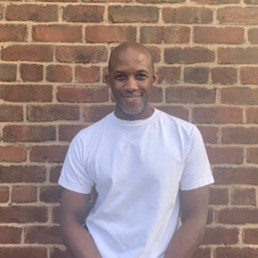
Written by Darren Crosdale
English and Media Studies-trained teacher, currently working in a large Liverpool comprehensive
I could list the oh-so-obvious issues faced by teachers in working-class schools but if you’re reading this, it’s likely you have already read similar compilations on a blog or a Twitter thread. So, I decided to do things a little differently.
In over twenty years of teaching, I have had students disclose a wide variety of issues. That they are trans. That their parents are separating. That they had unprotected sex with a neighbour’s lad while their mothers were downstairs chatting. That they were smuggled into the country in the back of a lorry and almost froze to death. The list goes on.
I have never, however, had a student tell me they are poor. That they are hungry. Or that the weight of poverty on their young shoulders was unbearable. Never. And I know from colleagues up and down the country, this situation is replicated.
Occasionally, students ask me to pay for their lunch (and I know I am not the only teacher, sadly.) Every now and again a student will say ‘Those apples look nice sir,’ pointing at the apples on my shelf. (I am known for having a Pink Lady at break time. I will always hand one over.) Never, however, has a student divulged that they are ‘poor’ or ‘struggling’ or ‘disadvantaged’ as our teacher parlance states. There is an immense shame attached to poverty in our society. A shame that is rarely spoken about or directly confronted by staff and students alike.
One of my favourite lessons asks students to think about how much the government thinks their education is worth: not some flimsy philosophical description but raw numbers, please. We start off by discussing the world-famous private school, Eton College. Its fees are approximately £46,000 per year. When students begin to brainstorm how much your average secondary comprehensive receives from the government for each child, you can see lights twinkling in eyes. I sit back and listen carefully.
“I reckon the school gets £50 for us,” a girl said recently.
“Per year?” I reply.
“That can’t be right,” retorts a lad. He’s good at Maths.
“Actually,” another student asks, “Do the teachers’ wages and the leccie bill and glue sticks come out of that money too?” She’s better at Maths.
“Yup,” I reply.
“So, it has to be more than £50!” another student snorts.
And so, the discussion continues. This is one of those lessons all teachers enjoy: the students are teaching each other; they are thinking, critically, about our society; it’s one of those lessons where they question the way in which inequality works. Invariably, the students’ suggestions about how much their education is worth moves up from £50 but they can never settle on a figure. Whatever total they hover around, however, it is far, far away from £46,000.
Because these regular comprehensive students simply feel they are worth less than those who attend Eton.
Because they know Eton and their comp are both schools but that one is so very different from the other.
Twenty of the fifty-seven prime ministers the UK has had, went to Eton, including Boris Johnson. Our illustrious former prime minister is in the news as I write this. He earned £1m in just six weeks for after-dinner speeches. It also turns out he is living, rent free, in a phenomenal London town house as well. (https://www.gbnews.uk/news/boris-johnson-living-for-free-in-20m-home-in-britains-poshest-street-despite-earning-1m-in-six-weeks/422207) Because of course he is.
Parents will tell you that one of the fascinating aspects of raising young people is around their acquisition of language. My young people do not yet have the power to say “the myth of meritocracy makes our lives more difficult”. (https://news.harvard.edu/gazette/story/2021/01/the-myth-of-meritocracy-according-to-michael-sandel/) But they can damned well draw a link between Boris Johnson attending Eton, becoming Mayor of London, failing upwards to prime minister, getting caught bending the truth, time and time again, stepping down, only to earn more in six weeks than they ever will in their lifetimes.
I haven’t even mentioned the pandemic yet. Ask any teacher and they will tell you there is a clear demarcation between Before and After two years of lockdowns. Things may have been tough Before but After is a whole other thing. Lockdowns were damned difficult if you were in a comfortable house, worked from home, took regular exercise and did not lose anyone to the awful disease. For those who were already struggling, however, lockdowns were perhaps a last straw. All inequalities were magnified – health, finances, education. A friend who teaches in London told me he insisted during a lockdown lesson, that everyone in his A-Level Biology class turned their cameras on. He was desperate to boost morale and add that human touch so very missed during those dry, dry lessons. A student reluctantly, finally turned on her camera, only to reveal a tiny bedroom with six other siblings wearing headphones, trying to focus on their own online lessons. “That’s OK everyone,” he said, heartbroken after a few seconds of realisation, “You can turn them off if you want.” She immediately clicked that small camera icon off.
The worst of it is that, although our new normal is acknowledged – poor mental health, widespread substance abuse, clear mobile phone addiction – these issues have simply been tacked onto the other issues the most vulnerable in our society have been fighting with for decades.
So, no, I didn’t discuss list the typical list of problems working class school face – recruitment and retention, teachers’ pay, non-sticky glue sticks and a Michael Gove-created exam system that is clearly linked to British children ranking as some of the most unhappy in the Western world … but all of that is in attendance too.
“New year, new me!”
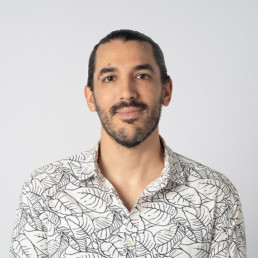
Written by Andrew McGeehan
Andrew (he/him) is a trainer/consultant based in Singapore that loves talking about anything DEIJ related and/or cats!
A phrase that all of us hear a lot every year right around this time. I know I have said it (and non-ironically!). This year, I’m asking myself (and all of you reading this) – what will actually be new? What am I planning to do differently this year? How am I planning to spend my time, energy, resources, and money? How will I commit to uplifting others, pushing for justice & equity in the world, and naming hurtful behaviour in my community?
And in the end, will the new me take the time to reflect, look inward, and identify the ways in which I also contribute to marginalisation and oppression?
Every time a new year comes, regardless of the calendar that we use to mark it, it is a time for renewal. There is that surge of energy that comes with seeing the whole next year laid out before us and the possibilities fly through our minds. We imagine who we might become, who we might meet, what new opportunities we will have, and a whole new life can flash before our eyes. But before we know it, we are back to work, back in our lives, back to the same old routines we always had, and within a month, we are left wistfully wondering where that excitement for the new year went.
I will challenge you today to not let that happen!
I challenge you to make empathetic, inclusive, and justice-oriented commitments to yourself and others and to follow through on them.
I challenge you to question yourself constantly.
I challenge you to have conversations you’ve never had before that are difficult and nuanced.
I challenge myself too.
I am a queer white cisgender able-bodied man doing diversity, inclusion, and equity work in Asia. There is a lot for me to continuously unpack about my cultural background, my perceptions of reality, my understandings of privilege and power. I am constantly learning and interrogating what it means to be a white person and a cisgender man and talking about these issues. I’m clarifying for myself where and what my role should be.
If you are interested in solidarity work, allyship, advancing racial & gender & orientation & disability & religious (& more!) equity, and seeing the world take more rapid steps towards equity and justice, I’ll invite you to make these commitments along with me.
1.Do the internal work – When we want to work towards justice and equity, our interest and passion for the topics aren’t enough. There is a lot that we need to accept about ourselves, socialisations to try and unlearn, and reflection to be had. I often work with folks who prefer to skip this step – in trainings, someone might say “Can you just tell me what we should be doing to make our organisation more inclusive?” And yes, I could do that. But without any understanding of our own internal worlds, we won’t be effective advocates for justice.
What do I mean by this? Spend time uncovering your own biases, accept that we are all brought up to believe negative stereotypes about people who are different than us, analyse your social circles, identify who you gravitate towards to at work and who you avoid and why. We don’t need to be perfect people in order to engage in justice & equity work, but we do need to be aware of what we are walking into the space with.
2. PLEASE move beyond awareness – Awareness is over. There is so much information out there via mass media, pop culture, research, memoirs, peoples’ lived experiences, surveys, etc etc etc! Awareness isn’t a bad thing; but for many people and organisations, it’s the only thing. Awareness without action doesn’t change anything. Having a work event to celebrate International Women’s Day and share information on the wage gap is fine – but it ultimately rings hollow if there isn’t follow up within the organisation to actually reduce/eliminate it within the organisation.
3. Name harm with your friends, family, & colleagues – It’s time to start doing the hard work and talking about these issues with the people closest to us (or at least those we spend a lot of time with). Especially for those of us with a lot of privilege, it’s necessary to name the racism, heterosexism, ableism, sexism and other harms that we see within our families and friends. Naming it and discussing it doesn’t have to be a big conflict, nor does it mean that the person called out is a bad person. We all do things that are hurtful at times, and if we aren’t held accountable for it, we won’t be able to understand and change our behaviour.
It might be easy to start with something simple, like saying “I don’t think comments like that about gay men are appropriate” or “I don’t think jokes about immigrants are funny.” If feeling generous, we may take more time to explain how the actions might harm us or make us feel or provide more resources for them to do their own learning.
4. Commit to making lasting change – Systemic -isms persist because the systems haven’t changed yet. There is tons of value in changing our internal worlds and educating our friends and family. It’s also extremely powerful to work to change systems. In many cases, our capacity to change a system will be in the workplace. We can advocate for policy changes, required trainings, targets for inclusive leadership. These changes can be difficult to make and sometimes run the risk of seeming “boring”, but they create change that lasts beyond our tenure in any organisation. For instance, an organisation celebrating Trans Day of Remembrance and encouraging staff to share their pronouns is great, but does that same organisation have trans-inclusive and affirming healthcare?
If you are part of an Employee Resource Group/Network Group, this is a great space to start considering what institutional changes need to happen in order to create an environment of affirmation and comfort for all. An easy way to start is by reviewing company policies – is the language gender-inclusive? What is the parental leave policy? Are there flexible arrangements? How are neurodiverse staff supported? Does insurance cover mental health?
5. Read & learn about it from those who know (and believe in their knowledge of their own experiences) – There are many amazing activist writers, artists, musicians, and filmmakers out there. Learn about them, learn from them, and buy their products! If you are a majority race person and you don’t know about racism in your country/region, there is surely a book about it written by someone who experiences that racism daily- read it with an open mind. If you want to understand better the experience of a person who lives with a disability, find research that talks about the workplace challenges folks face.
And when you read, listen, and watch about these experiences, believe them. Folks with marginalised identities know what they have experienced. Sometimes we want to dismiss what we hear because it makes us uncomfortable or because we know that we have participated in similar hurtful behaviours. Lean into that discomfort and try to identify where it is coming from without being defensive. I know this is hard and I still struggle with this sometimes, but it is so necessary. Just pause and ask yourself “what about this is making me feel this way?”
Some Singapore-based starting points:
- “What We Inherit: Growing Up Indian” – True stories of Indian women’s experiences in Singapore
- “Queer Singapore: Illiberal Citizenship & Mediate Cultures” – Highlights the complexity of queer existence in Singapore
- https://transformativejusticecollective.org/ — Learn more about the work being done to shift justice away from the death penalty and towards transformation
6. Expand your social circles – So much of my own social justice learning has been through relationships I’ve built with people. I was very lucky to go to graduate school with an extremely diverse cohort and build wonderful relationships across race, gender, religion, and more. Our familiarity with issues brings us greater empathy, and many people care more about issues that affect someone they know. Inclusive access in a city may have never mattered to someone, until their partner becomes wheelchair bound and then they will notice all the ways in which cities are not built for folks with physical disabilities or mobility challenges.
As a word of caution, I do not advocate expanding your social circle in a way that is tokenistic (i.e., I should find a gay friend! I don’t have one of those!). But think about ways that you can expand who you interact with, through social media, connections from other friends, or volunteering. Take a look at who you already know- what is the makeup of the people you spend time with? During my trainings, I always ask people to consider who they go to lunch with at work and who they see other people go to lunch with. My personal experience in Singapore is that many foreigners take lunch together and many locals take lunch together. Could there be unconscious bias at play? Could people be more comfortable sticking only with what is familiar? I don’t have an answer, but it is worth investigating what this looks like for us individually and see what patterns we observe.
7. Try, fail, apologise, and try again – Whenever we engage in work related to justice and equity, we will invariably make mistakes. When someone tells you that you have hurt them, or done something that is racist/sexist/homophobic/etc, apologise for causing harm. If possible, have a conversation to make sure that you understand what it is that was hurtful (but don’t force the other person to share this with you). Think about how you can do better next time and maybe reflect on the experience with a trusted friend.
Maybe you want to become more comfortable naming microaggressions at work – you won’t do it right all the time. But you will be able to refine your technique and enhance your comfort level as you practice. As with any skill, we need to practice it to get better at it. Working towards justice and equity are no different. Do your best and approach this work with a lack of ego and the knowledge that you will make mistakes and that is ok.
8. Understand what you have to gain – Greater justice, equity, and inclusion in the world benefits everyone. People with privilege often feel like they are “losing” something, but that is not the case. There is enough equality to go around. Understand that advocating for gender equity creates new opportunities for people of all genders, including men. We are not diminished when others have the same opportunities that we do; but we are diminished when others are held down by systemic oppression.
Along with this, we have to know and understand our own “why.” Why are you doing this work? Why do you care? I often see organisations and individuals who are doing D&I work because it is seen as trendy or required in the contemporary era. This is a surface level connection to the work that won’t go beyond some token improvements or remain mired in awareness-building. Think for yourself about what your personal commitment is and act from there.
I am pledging myself to the above as well. I am continuously interrogating my place as a White American man in Asia talking about diversity, inclusion, equity and justice. I reflect on how privileged I am to be able to be hired by companies to do this work. I mess up in my trainings and apologise to participants when I’ve cause harm. I work to continue finding research and pedagogies that do not have a US-centric lens and are context-specific to Asia & Singapore. I can and will continue to refine and nuance my approach towards this necessary work.
It’s a journey that we are all on. I hope that you will come along with me in 2023 and consider which of the above items might be part of the “new you.”
The issue with “high expectations”
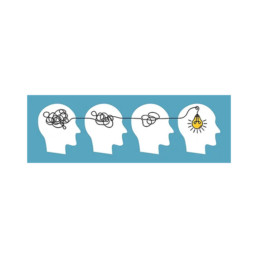
Written by IncludEd Diagnostics
IncludED Diagnostics support local authorities, academy trusts, and individual schools with their work to increase inclusion, reduce suspensions and reduce exclusions. More information is available at www.includeddiagnostics.co.uk
If you are sanctioned for failing to meet an “expectation”, it is, in fact, a “condition”.
For a long time I have been interested in why deprivation and poverty are associated not just with academic outcomes, but with behavioural outcomes, and on my journey to understand this I came across a researcher called Sendhil Mullainathan and his work on the concept of scarcity. In his view, scarcity is a much more wide-ranging concept than poverty (an arbitrary threshold of income), i.e. we can have a scarcity of time, health, family support, relationships, cultural input, etc. – all of which can impact our outcomes. In describing the impact of scarcity he uses the analogy of packing into a smaller suitcase, and inspired by the #IncludEd2023 conference today, I’d like to start with this.
Two pupils are going away for a week, one packing into a large suitcase and one into a smaller suitcase. The suitcases can be seen as strict metaphors for disposable income (family income in this example), or in a broader way as availability of lots of different resources… but they both articulate a difference in experience.
The pupil with a smaller suitcase (i.e. scarcer resources) has a smaller capacity for items, therefore…
- They are forced to operate with more conditions
Their items have to be folded smaller and packed away better than the pupil with a large suitcase. They have to make more “either/or” decisions on what to pack, whereas the pupil with the larger suitcase can pack more with less efficiency.
Could you list all the conditions / expectations children must meet to engage fully in your school? When we put pressure on parents/carers to immediately provide a new pair of school shoes, do we consider the scarcity that so many are living with? Less time because of childcare or multiple jobs, the cost and time of travel to get the shoes, the cost of the shoes, and what is the “or”? What isn’t being bought, what isn’t time being invested into?
- Decisions have to be better!
Not only does the pupil packing into the smaller suitcase have to make better, not equal but better, decisions because there are more conditions, but any errors they make will cost more. If both forget their phone chargers, one may buy a new charger with relative ease, one may not. If packing is done badly and an item gets damaged, the same applies.
Living in scarcity means a “lack of slack” for mistakes – we all make mistakes but they don’t cost us or impact us all equally. There is very little flexibility for this within most school behaviour systems as the consequences appear superficially the same – the same detention time is given. The actual impact – socially, emotionally, educationally – may vary widely.
- Triggering reminders of scarcity means we have less “bandwidth” for the process [not our inherent intelligence / cognitive capacity but how much of it is temporarily available]
There is research to support this – using food-related words in word-searches prompted dieters to be significantly slower in finding the following words – and the implications are profound. The implications are that the concentration, focus, and attention needed to actually pack the suitcase is more limited for those affected by scarcity when that has been consciously triggered (i.e. I wish I had a bigger suitcase like other people!) Wouldn’t that make this pupil more likely to make mistakes? Ones which cost more?
——————————————————
What prompted me to write about this today was hearing from two speakers who have experienced the care system. Consider the conditions we place on children in school, then consider the size of the suitcase a child in care is packing, i.e. the multiple levels of scarcity they may be experiencing. We have conditions on appearance and equipment – coat, black socks, bag, colour of pen, PE kit, pencil-case, etc. We have conditions on behaviour – a consistent requirement to accept adult authority and direction, regulate level of activity, attention, and emotional response. Even peers come with conditions for integration – they could be clothing, games consoles, cultural references, a similar capacity to spend time together outside of school. Some of these may feel impossible for a young person to achieve… Lemn Sissay OBE described it so viscerally today when he recalled “the smell of people with families”.
The speaker before Lemn was Jade Barnett, which is a name you will come across again in the future. Her educational journey travelled via two managed moves, a pupil referral unit, a move into care then a move into a care home at the opposite end of the country. Jade is a model of the most positive outcomes – today she held five hundred minds in her hand purely because she speaks with such intelligence, articulacy and power. But, as a child, she was forced into a situation where she was packing into a small suitcase. And the schooling system places yet more conditions on her, and others like her. Nowhere in her speech did she imply that those conditions were helpful; where many, such as Lemn, feel like they don’t belong already, the consequences of failure to meet these “expectations”/conditions must only reinforce that perception. At their least useful, they make engagement and access to education harder for some of the most vulnerable.
————————————————–
To return to more typical language of schooling, high expectations can no longer be a cover for just describing a very large number of conditions. And we need to stop painting such conditions as supportive to young people by their mere presence. That is to confuse equality of expectations/conditions with equity, but that isn’t equity at all. In reality, we may be both ignoring the smaller suitcase and expecting more of the child who is packing it.
High expectations of academic progress are crucial to all children fulfilling their potential, and these are genuinely “expectations” because they come without sanction. Without them children may not be taught to their full potential. Alongside that, adult understanding of the difficulties that some children face is a critical factor in making sure children belong and can thrive. For school and education leaders, it is worth considering what is within your control and sphere of influence to mitigate the impact of scarcity. Is the pupil premium grant being used to best effect? Also, please do consider when thinking about the rewards and sanctions in your school how do you make things fair for those living with scarcity?
Why I pretended my dyslexia wasn’t a big deal - my experiences as a dyslexic teacher.

Written by Catrina Lowri
Catrina Lowri is the founder of Neuroteachers and a neurodivergent teacher, trainer, and coach. As well as having 22 years’ experience of working in education, she also speaks as a dyslexic and bipolar woman, who had her own unique journey through the education system.
When I had already been teaching for about 10 years, I met a pair of grandparents at a friend’s barbecue. They had just received some devastating news; their 9-year-old grandson had been diagnosed with dyslexia.
They told me this in hushed voices, as if they were ashamed.
Although, their reaction was not unusual (97% of respondents in one survey viewed dyslexia negatively *), I was taken aback. Did this mean I should be ashamed or devastated about my own neurodivergence?
I did my best to reassure the couple that their grandson would be fine. I told them lots of successful people, like Richard Branson and Tom Cruise are dyslexic. Although he might need extra support, their grandson could get GCSEs and A levels if he wanted. They seemed reassured. Then I told them I was a dyslexic teacher.
Their reaction astounded me even more than the shamed hush had done previously. They were over the moon at my success! The grandfather toasted my talents, and the grandmother gave me a hug. They both treated me like I had just climbed Mount Everest. I couldn’t fathom why.
Until that point, I had never considered my achievements anything special. Yes, I’m a dyslexic teacher who went on to gain a master’s degree but was that out of the ordinary? I knew no other dyslexic teachers, but they must exist. I’ve always disliked it when people say I’ve ‘overcome’ my dyslexia. I haven’t. I’m still as dyslexic as I was the day I was born ( it’s genetic). I’ve just found ways around it. Most of which involve the use of technology.
I used to downplay my attainment in a matter-of-fact fashion. I disliked people who made ‘ a big deal’ of their dyslexia. My dyslexic friend, and I used to joke that we would write a book called ‘So you’re dyslexic? Just live with it!” As if all you had to do was keep calm and carry on.
I have talked before about my experiences at teacher training, where another student commented that he believed dyslexia was a middle class camouflage of a lack of intelligence. That must have stuck because, up until my chance meeting with these grandparents, I had just shrugged off my neurodiversity (ND) and downplayed my success.
After meeting my fellow barbeque guests, however, I changed my attitude. No, it hasn’t been easy to forge my career, firstly as a schoolteacher and now as a private specialist teacher and trainer. Yes, I do find several aspects of the job harder because of my ND. And yes, I am proud of my achievements.
I’m now 23rd years into my career, I’ve met hundreds of colleagues, yet I know very few ND teachers and even fewer dyslexic ones. My next step is to try and find us all support and recognition so that we can be good role models to ND children. And perhaps inspire the next generation of ND educators.
Reference Dr Kate Griggs ‘ The Creative Brilliance of Dyslexia’ https://www.ted.com/talks/kate_griggs_the_creative_brilliance_of_dyslexia
Two Years On: Where are we now?
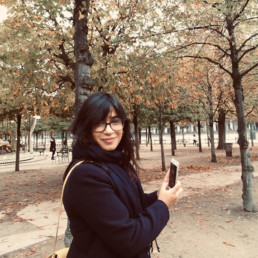
Written by Hana Malik
Hana Malik is currently an Associate Senior Leader, Head of English with a passion for social justice, diversity and equity.
We decided, after the murder of George Floyd in the US, that we wanted our educational organisation to join the movement against racism and we turned our school towards the necessary work it took to be anti-racist. Now, two years on, I find myself asking where we are and what we’ve achieved, if we’ve made any positive changes to the lives of our staff and students and if our DEI work has moved us forward.
We have heard it before, and it is key to achieving success: DEI work is circular – it is evolving and the work is never ‘done’. It is vital therefore to reflect on progress and ensure the evolutions keep happening.
Ella Washington, an organisational psychologist and founder and CEO of Elevate Solutions (a DEI strategy firm), helps to clarify the ‘five stages of DEI maturity’ and how we might evaluate the work we are doing. The five stages are: aware, compliant, tactical, integrated and sustainable. She explains this in her upcoming book as well as for the Harvard Business Review: https://hbr.org/2022/11/the-five-stages-of-dei-maturity She has also spoken about the three Ps of DEI evaluation.
Purpose
The most important place to begin is with the why, especially because there is (not yet anyway) no standard of DEI in an educational setting against which you can measure your organisation. No teacher standards (although meeting the needs of learners is often cited as DEI adjacent) and certainly no Ofsted criteria under Quality of Education or Personal Development. I consider our school and think about where we were in 2020. Why did we join the movement? Did everyone know where we were going and why we were going there? Did everyone feel safe in joining the journey?
There were great successes in this area, especially in 2020 and 2021. Now however I must admit that our commitment to DEI has become something of an ‘extra’ improvement priority. Not because we don’t believe in DEI, but because, like all schools, the reality of exams, Ofsted, sky-high bills, mean that we are juggling countless balls and it has been hard to hold on firmly to the DEI one. Most important perhaps is the question of whether our why has changed and if as leaders we can be courageous enough to acknowledge that and realign the vision.
Pitfalls
This can be difficult, but honest reflections and consideration of barriers and pitfalls will contribute to successful and sustained DEI work. Were leaders vulnerable and open about why we’d started this journey thereafter building confidence and trust in the staff body? Did staff have a secure and shared language about DEI? Were changes manageable and sustained?
We’ve fallen into some predictable pitfalls. The one that is arguably most challenging is that we have stopped communicating our vision and goals for DEI. Is it still on our school improvement plan? Yes. Do we all know why it’s there and what change might entail? No. Secondly, the work of DEI cannot fall to one person. A DEI champion is great, but what happens when they leave? We know how important middle leaders are in delivering change, and it is in that room we can ensure that DEI is sustained.
Progress
The all-important ‘this is progress’ stage. The curriculum, the outcomes, the senior leadership team. We want to see progress across all elements of our organisation. So, what does progress look like? What does it look like in the short term and the long term? How can we find out where we are now and where we need to go next?
We do have a more diverse and representative SLT. We do have a more inclusive recruitment process from blind CVs to diverse panels. Our students do learn about a wide range of topics; from kabaddi in PE to reframing migration. There are boxes we can tick now, that is true. But we know our work is far from ‘done’. We will need to return to the question of what progress looks like for us and go from there. If schools are microcosms of the society we live in, we need to think carefully about what DEI in a socially just and equitable world looks like. We can then build the change we want to see.
Tidying up: a lesson in values from the Japanese football fans
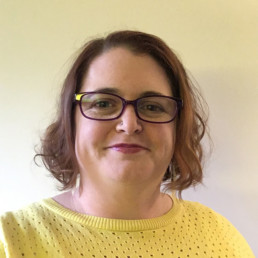
Written by Esther Cummins
Course Leader MA Education (online) at Falmouth University
Every four years, the World Cup offers schools a theme around which to focus their learning. The links to geography and sport are obvious, but further learning opportunities include the application of probability, time zones, languages, and textiles. Unexpectedly, this year we have all been shown an example of community values from the Japanese fans and players.
The pictures and videos that have circulated of spotless dressing rooms and tidy stadiums show the communal value of respecting your hosts held by the Japanese visitors. This representation of fans and players is a far cry from the embarrassing behaviour that is often seen in media reports about English fans. So why is there such a difference in the behaviour?
Interviews with Japanese fans have commonly cited the term, “atarimae”; the English translation is similar to ‘obvious’ or reasonable. From a young age, children take on the responsibility of cleaning their schools before they leave for the day. This task is not an ‘add-on’ to be squeezed into the curriculum if there is time. It is not a quick tidy-up or asking the students to put their chairs on the table. Without this cleaning, the school would be dirty.
I have cleaned schools out of necessity; in a small school where I was a senior leader, the headteacher and I were the contingency plan when the cleaner was absent. I have asked children to wash some toys at the end of a school term. I have asked university students to put their rubbish in the bin. But I have not worked in an environment where it was a regular expectation for the educators or the students to maintain the tidiness and cleanliness of the learning environment.
Within our society, we pay cleaners and caretakers less than we pay our educators. Perhaps this mentality is a hangover from the British Empire, where the wealthy expected their servants to clean up after them. Our values impact our behaviour (Steg et al., 2014), thus it is important to consider what and who we value. When we litter or leave a mess, we are saying we are more important than the environment or those that are paid to clean. Is this who we want to be as educators, and as a nation?
Respect is part of who we are; indeed, “The teaching of respect for others is not only one of education’s more important objectives, but in its absence little, if any, real learning can take place” (Ungoed-Thomas, 1996, p152). If we are viewing our pupils as the citizens of the future, we need to think carefully about the values we are instilling in their lives. Saying we are respectful is different to being respectful; we need to model and insist upon behaviour that mirrors this value.
This issue is about more than tidying up. It can be applied to any of our inclusive values, our desire for equality, and our drive for fairness. If atarimae means stating the obvious, which behaviours and values do we need to instil in our classrooms, from nursery to university, that creates a respectful community we are proud of?
We are yet to see who takes home the trophy, but I know whom I see as the winners of this year’s tournament.
When Does Identity Matter?
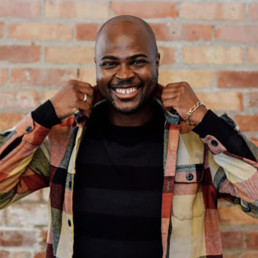
Written by Mahlon Evans-Sinclair
Mahlon Evans-Sinclair is an experienced educator with extensive participation in the fields of learning, professional & personal development, and EDI (Equity, Diversity and Inclusion).
A good rule of thumb is being able to articulate its relevance to yourself.
I often read many stories/recollections that involve identity markers as a descriptor.
I’ve reasoned with the many manifestations of how people use them and figure that whatever the expression, the main reason is to draw attention to something that seemingly has relevance to the story… but does it always…
A former colleague would often tell stories and when an identity descriptor would come up, they would often pause and say ‘and (e.g. race) is relevant to the story here because’… At first it would take me out of the story as I would wonder what the point of drawing attention to it was for, but the more I heard it being said, the more I felt comfortable and more understanding of its intention – It was a signifier for both the storyteller and the audience that the inclusion of this marker was intentional and why.
In thinking about how we use markers in education, sometimes we implicitly state things and expect that others instinctively know what we mean, or we (un)intentionally ‘add weight’ to the meaning of our stories by throwing in unexplained identity markers as though they are adjectives.
Consider for example that one of the students in a class has a learning difference that needs to be taken into account. It makes sense to say, ‘and this status matters here because (it will help with your planning/seating arrangements/conversations with them and their family)’. Consider that the same student happens to be the only non-white student in the class. Would stating that there’s a ‘Black kid with dyslexia’ in the class be helpful in the same way?
It’d be useful to think about what you’re actually intending to state.
– Is the race as important as the learning difference?
– Do the race and the learning difference compound?
– Are there no other ways of describing the student?
You could say that this would be simply solved by knowing and using the student’s name – yes(!) – however, we don’t always do this, especially when retelling a story to an audience who may not have the same level of connection to the subject matter.
So, consider when telling a story that involves an identity marker (such as race, gender, age, sexual orientation, physical or mental difference, etc), add in a clarifier of ‘their identity matters here because…’ and see if it actually does.

